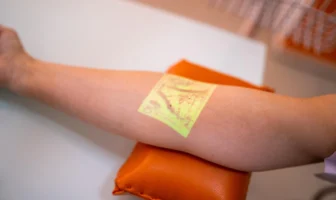
An addiction is a sluggish disease that slowly and gradually takes a toll on our health & life. When paired with an underlying mental problem, any addiction can become worse. This condition is known as dual diagnosis and is considered as a hard-to-treat condition.
It is treatable but the demand of time, efforts and the willpower for the same is high than any other treatment. However, the individual suffering from a long time dual diagnosis understand the need for treatment and give their 100% to recover.
This effort, when paired up with the clinical excelle, offers incredible results. But, before you choose any dual diagnosis rehab facilities, you must be considerate enough to ensure the best selection.
If you or any of your loved one has realized their need for rehab, here are some important facts about dual diagnosis facilities that you must know beforehand:
What is Dual Diagnosis?
In layman’s language, dual diagnosis is a condition when an individual suffering from alcohol or drug addiction, also develops some sort of mental illness or vice versa. The reports of National Institute of Drug Abuse states that more than half of the people who have a drug or alcohol addiction have also developed another diagnosable condition.
While it is easy to identify dual diagnosis in individuals, it is tough to treat them effects. In most of the cases, it is tough to relate the symptoms to the problems as both the conditions have more or less similar symptoms. Luckily, the dual diagnosis rehab facilities have evolved and there are efficient rehabilitation programs that focus on treating the conditions efficiently.
Common types of rehab facilities:
Rehab facilities are widely segregated in three categories- in-patient, out-patient and associated.
Usually, people are offered a choice to choose between inpatient and outpatient program. The two programs are different primarily on the basis of accommodation they provide. While in inpatient facilities, patients who reside in the facility itself are offered treatment, the out-patients facility offers help to visiting patients.
It is up to the individual or the family to choose the best option. Though both the facilities are assured to offer effective treatment for dual diagnosis, the success rate of inpatient programs is considered higher.
The success rate of a complete rehabilitation program is estimated around 47 percent by the Substance Abuse and Mental Health Services Administration. This is low because many addicts leave the program in between because of the complications and efforts required.
Those who successfully complete the program belong to the inpatient program category while the dropout cases are largely reported from the outpatients. The primary reason is the support and supervision offered in an inpatient program which helps individuals stay motivated whereas in outpatient the only success secret is self-motivation and family support.
However, not all rehab facilities provide high-grade solutions to dual diagnosis problems. The success rate of the program widely depends on the expertise and facilities offered by any recovery center. It is a must to run a thorough research and find out the credibility of the program offered by the clinic before finalizing any rehab center.
Read More:




























